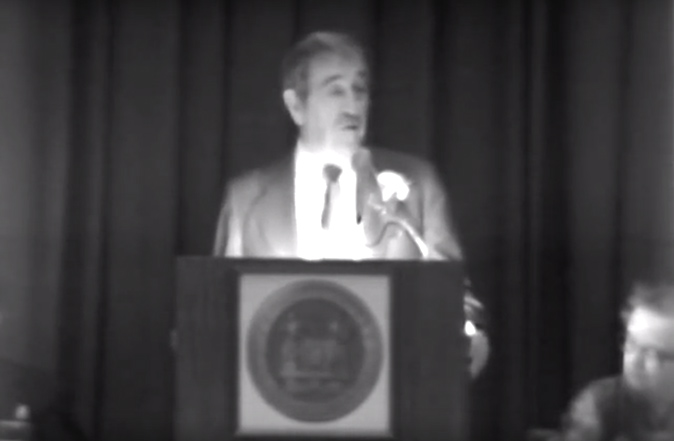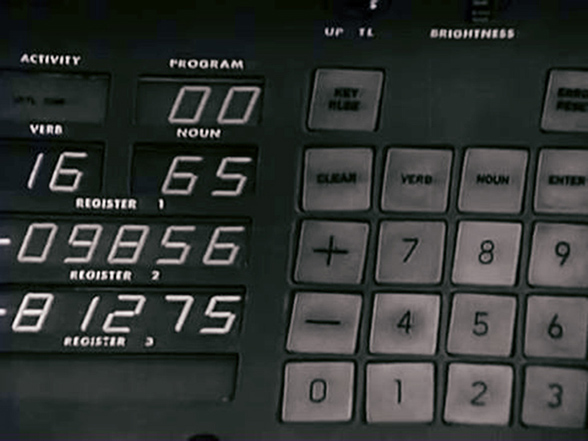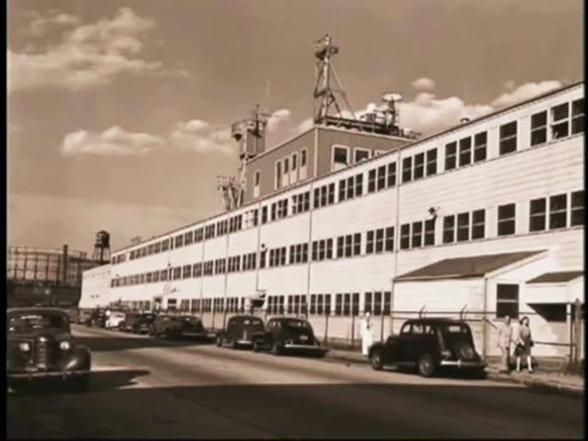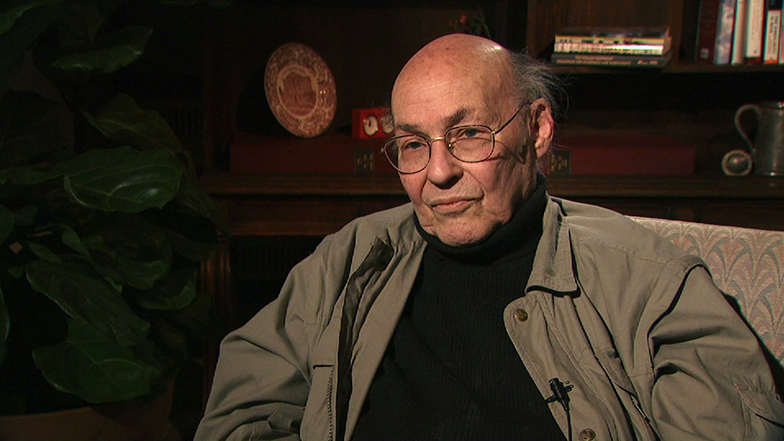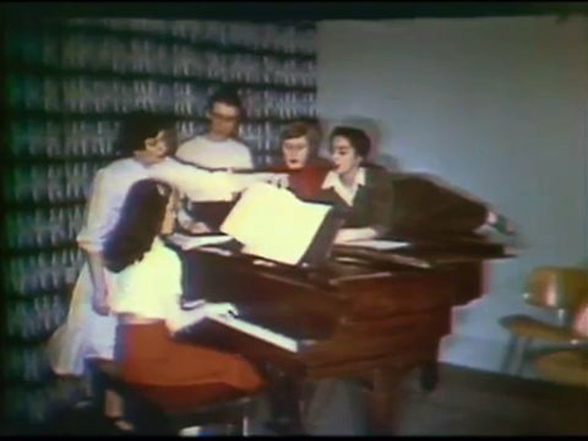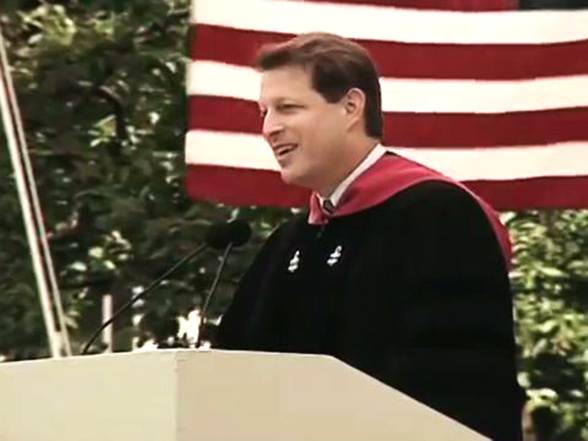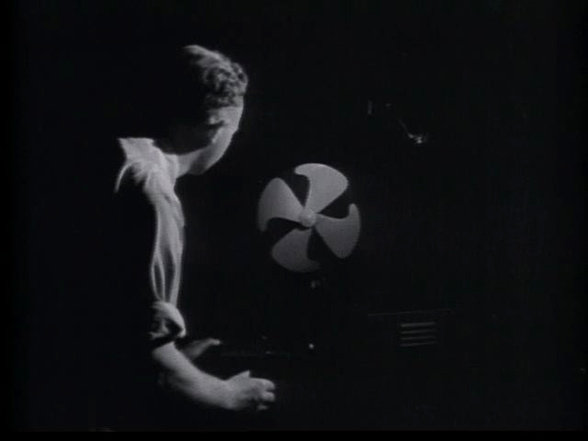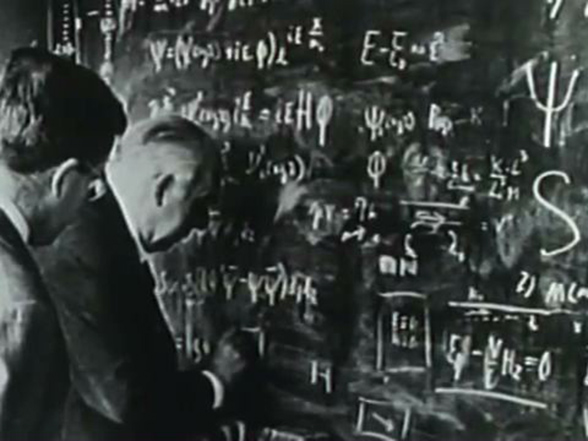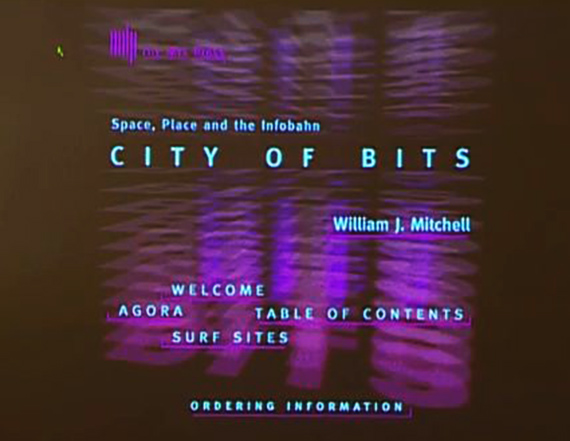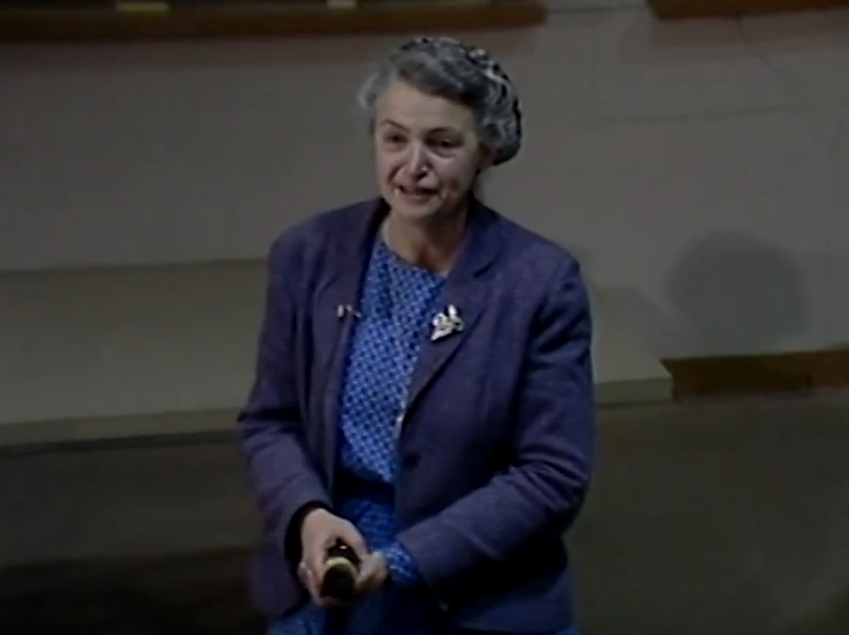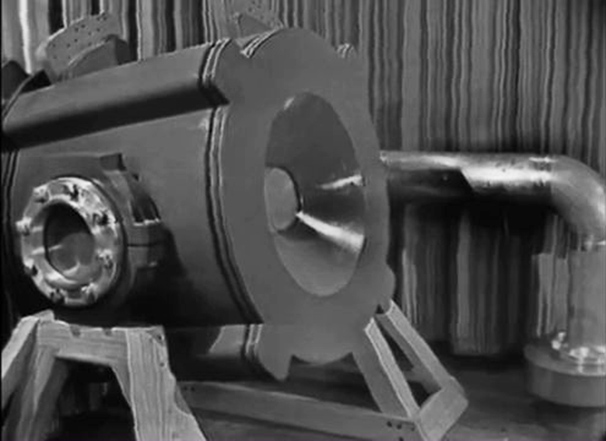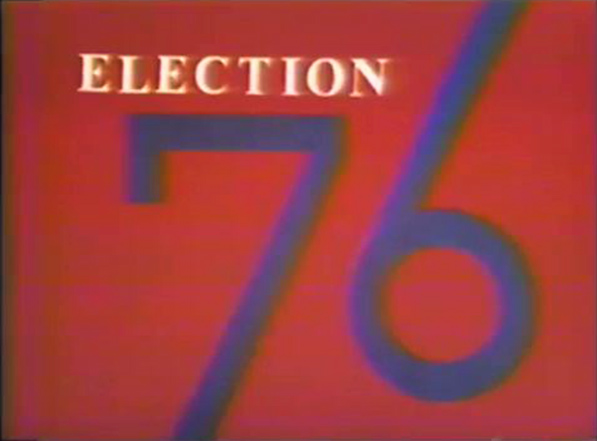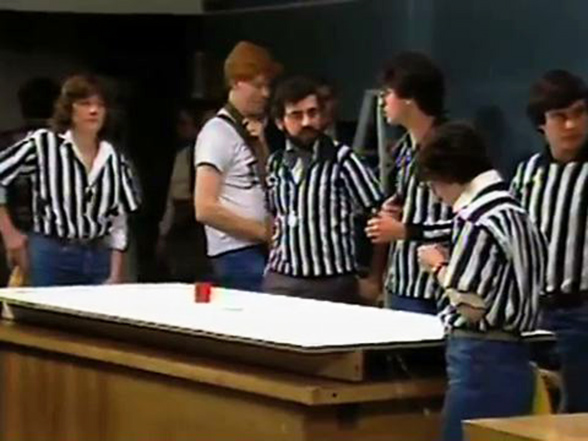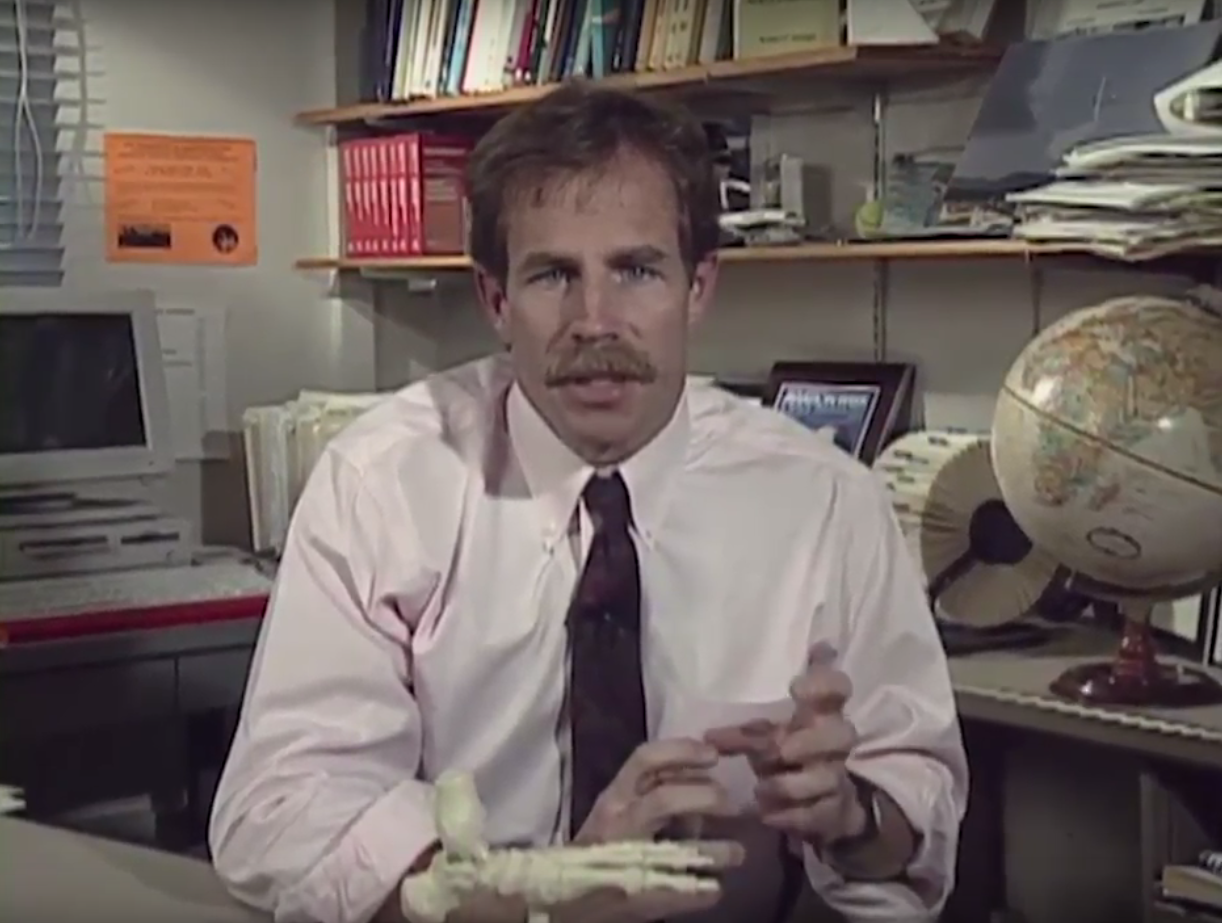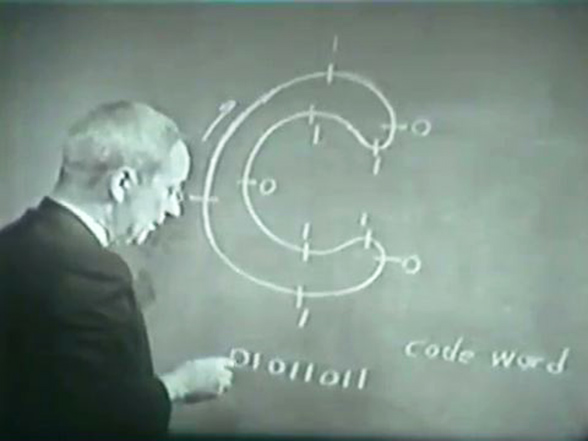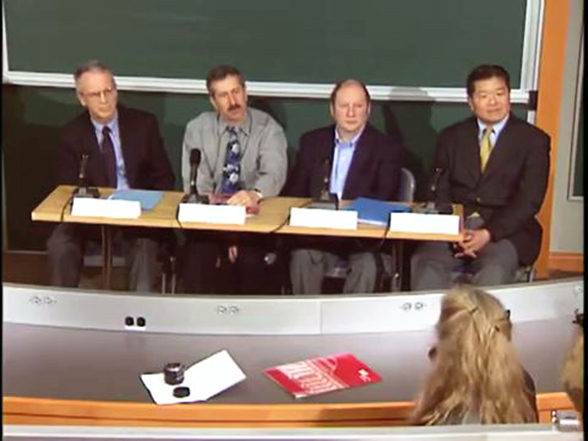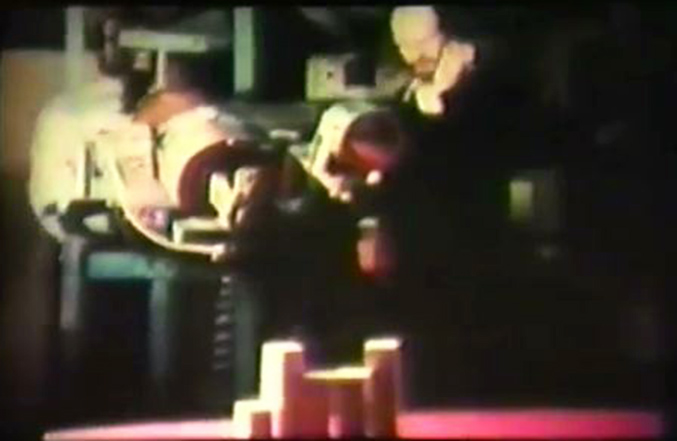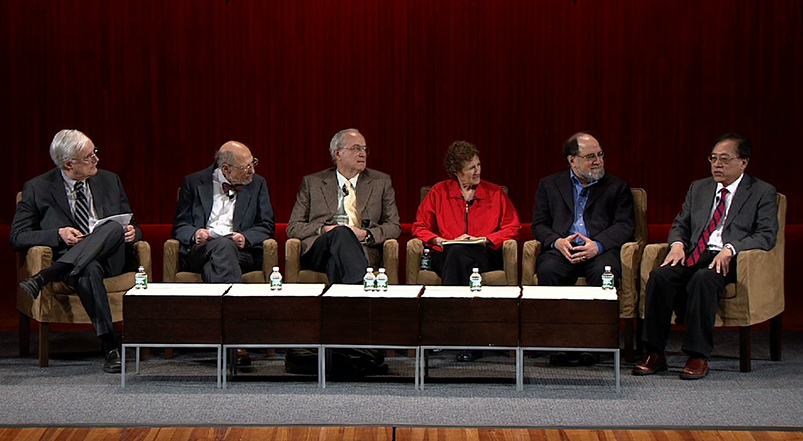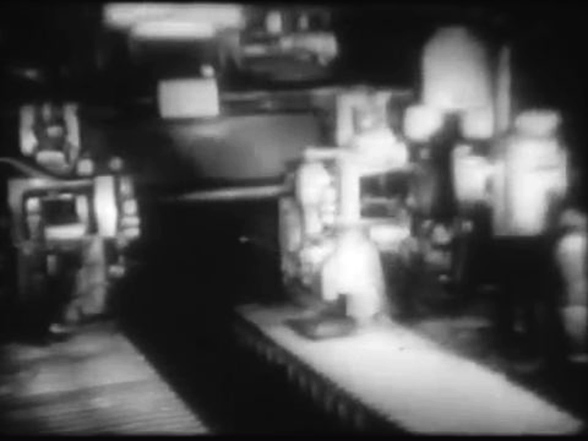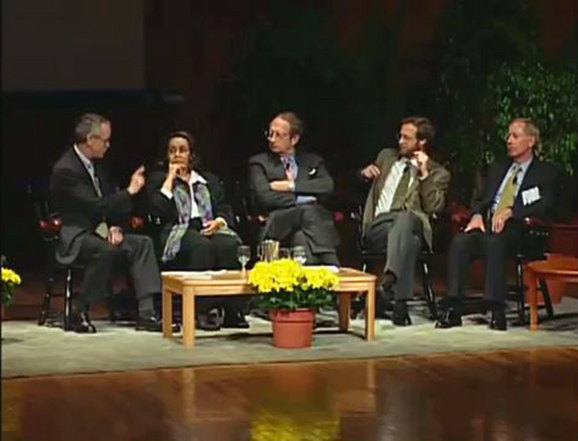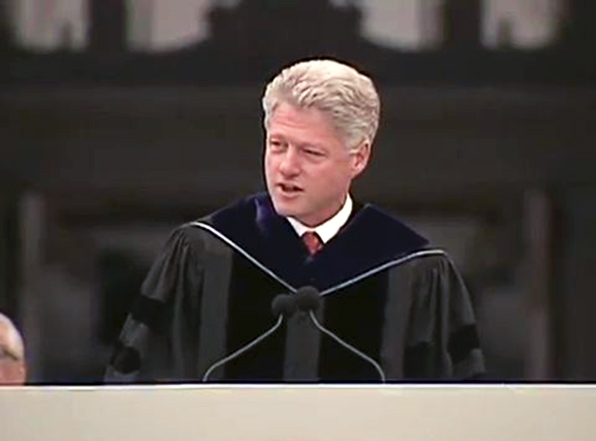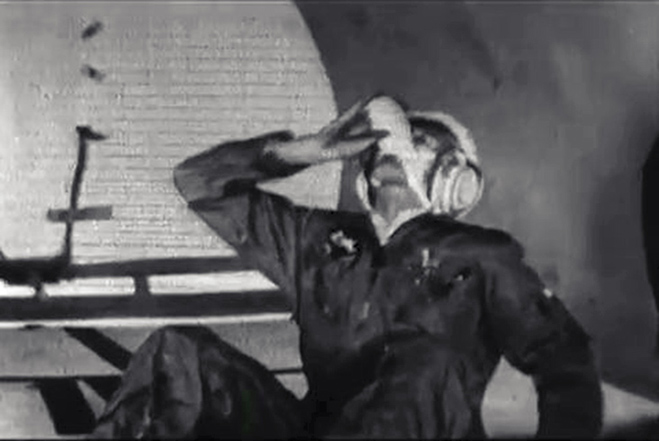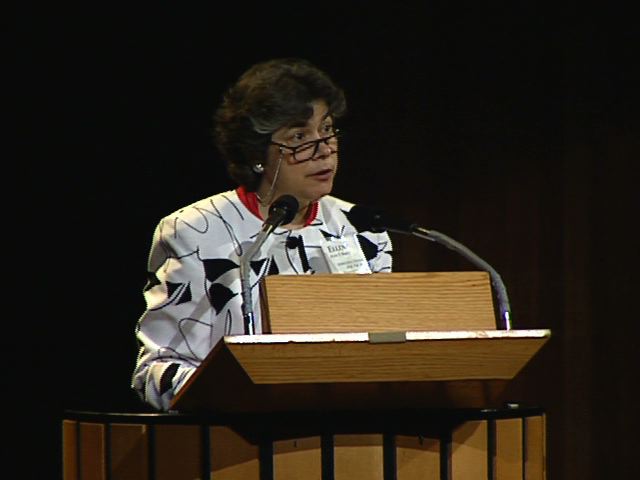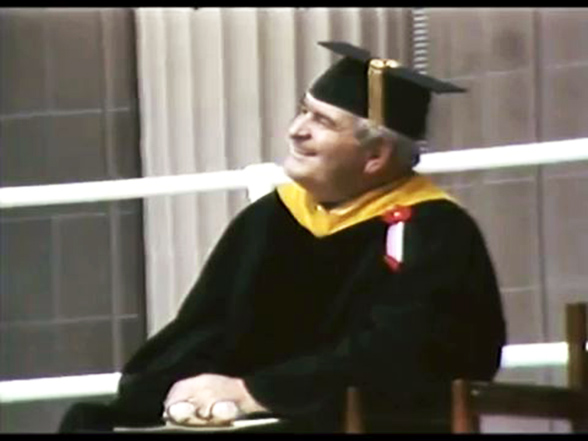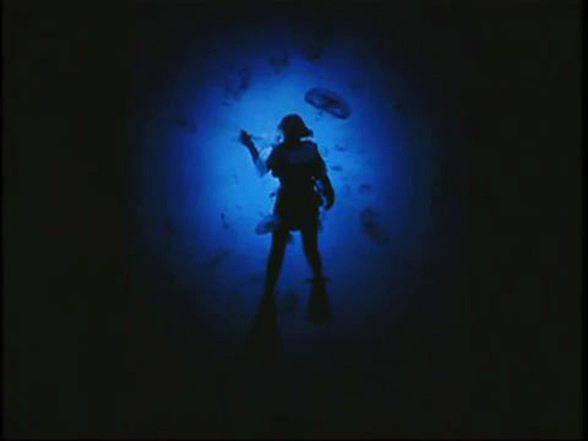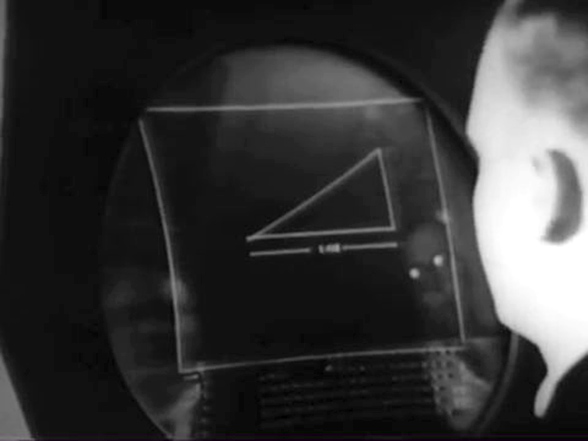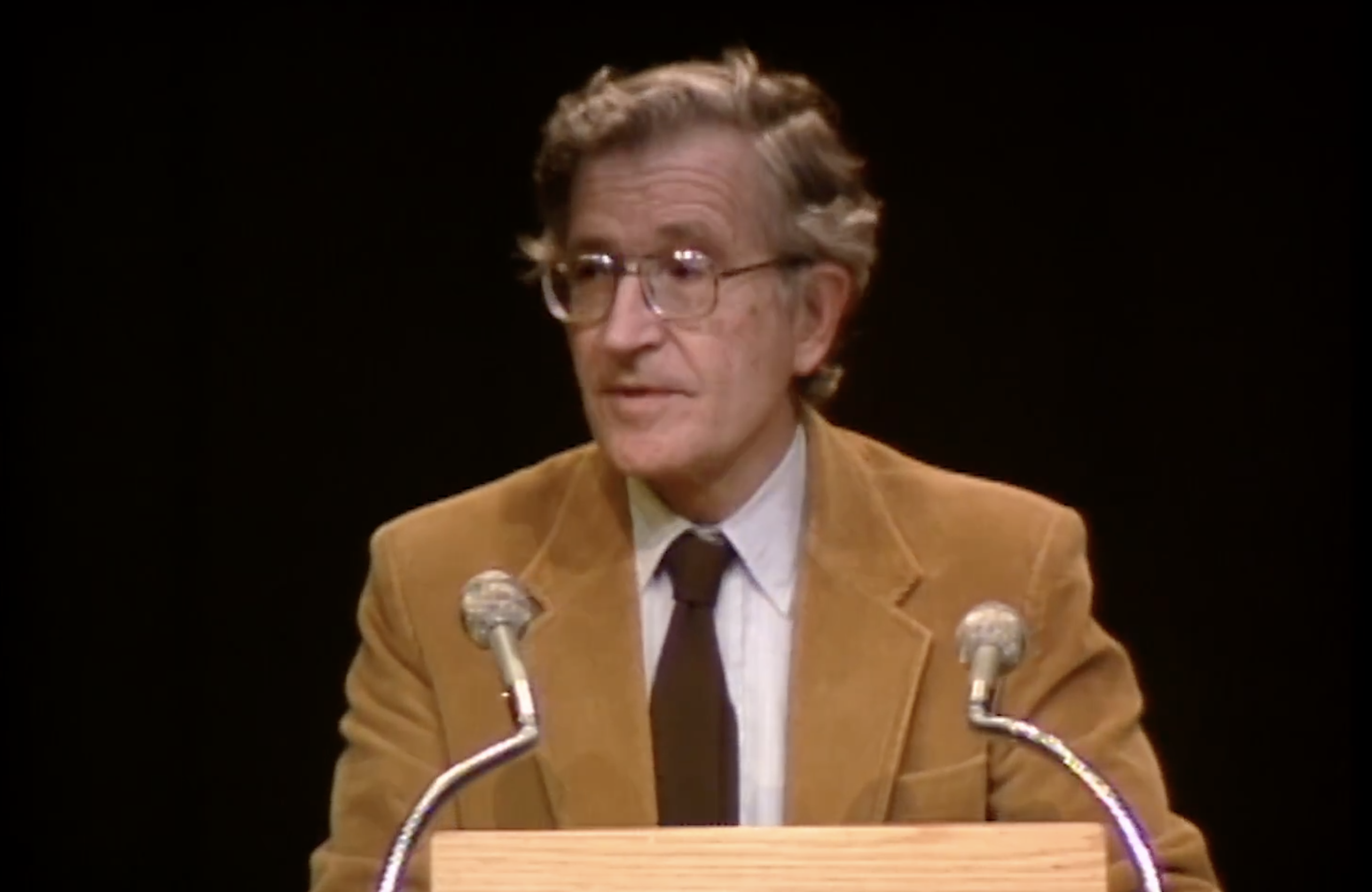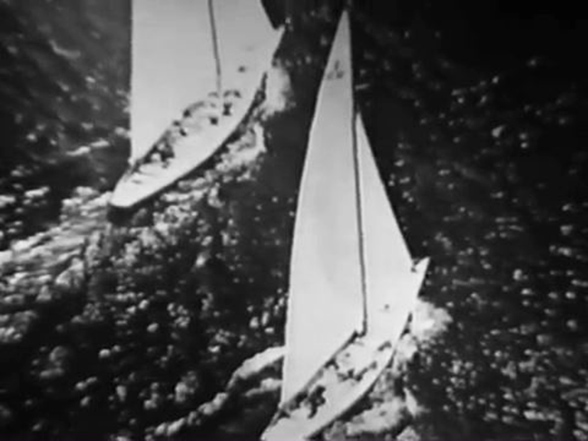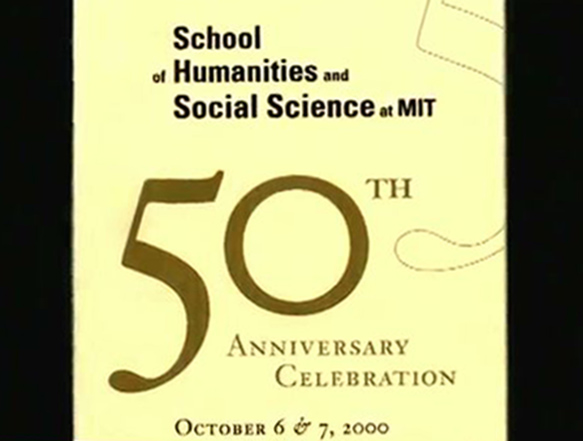Making Electrons Count (c. 1950)
NARRATOR: Before our story begins, let us look briefly at its setting. From Boston, we see [INAUDIBLE] Institute of Technology. MIT is best known for the scientists and engineers who have studied there. But much of MIT's campus houses laboratories and research projects, which provides a stimulating [INAUDIBLE] for faculty and students. On the edge of the campus is the digital computer laboratory-- home of Project Whirlwind.
This project started in 1947 when Jay W. Forrester and his associates began the design of an ultra high speed electronic digital computer, which they christened Whirlwind 1. Whirlwind first operated in 1950. This laboratories primary concern has been the development and the application of reliable and efficient computer components and systems. The original high speed, reliability, and versatility of the computer had been steadily improved with the incorporation of new storage devices, maintenance techniques, and auxiliary equipment.
By 1953, Whirlwind could perform 25,000 multiplications per second. In addition to its extensive use in research connected with our defense program, about half of Whirlwind's time has been dedicated to the solution of scientific and engineering problems of all kinds. The film which you are about to see, first shows a few examples of the types of problems in which computers can be useful. And then describe efforts of a typical user in programming a problem for Whirlwind I.
Electronic, digital computers carry out very rapidly long sequences of simple arithmetic operations, which yield the solutions to problems in three rather different areas of interest. First of the control of continuous physical processes, such as we see here in the manufacture of sulfuric acid. The distillation of alcohol. And the operation of an airport.
Air traffic control calls for rapid decisions based on immediate information about the positions of all nearby aircraft, their schedules, the weather, and so on. It is possible that before long this kind of information will be processed by computers and convert it into landing instructions for the pilots. MIT, and others, are conducting research into such real time applications, in which the answers are needed without delay so that they may be used to control the situation as it develops.
The second area of interest-- of equally great social and economic importance-- is the mechanization of such modern business office procedures, as accounting, payroll calculations, and inventory control. These activities now mushroom our office buildings and transform as rapidly into a nation of clerks. Third, our scientific and engineering problems, such as the design of power systems, transmitters, highways, and bridges.
Whirlwind has been involved in more than 100 such computational problems originating in many different departments of MIT. Take the geology department, for example. Seismic methods of prospecting for oil may seem a little strange to the onlooker. A charge has exploded at one point and the sound reflected from various underground layers of rock is recorded at a number of other points. A great deal of information about underground formations can be determined from these sound patterns. But only after long and tedious computations had been performed on them.
MIT's numerically controlled milling machine provides quite a different problem. Punched, paper tape instructed to cut the special contours required in cams, templates, and the like. The contours specified by formulas, or by sets of points, are resolved into a series of straight line cuts with suitable allowance for the tools that are offset. The endpoints of these successive straight lines are computed then recorded directly on tape by Whirlwind One.
Many of these final products are precision parts for airplanes. Another Whirlwind program for computing the gust loads on airplanes, as assisted aeronautical wind tunnel research at the MIT supersonic laboratory. MIT's chemistry department has used Whirlwind to determine the behavior of metals from the optical properties, a very thin films, of these metals.
Of all the applications for which Whirlwind has been used, few have done more to improve mans luck than on involving the design of an optical instrument to be used in research to aid the human eye. But let's not get ahead of our story.
PHYSICIST: I'm a physicist for the Retina Foundation at the Massachusetts General Hospital. And had been working for some time on the design of a very specialized optical instrument. Because of the magnitude of the calculations, I decided to attempt a solution on an automatic digital computer and look to MIT for help. On my first visit to MIT's digital computer laboratory, I outlined my problem to the senior mathematician at Whirlwind.
Briefly, it is this is, an optical system of my own design is analyzed as a first approximation to the desired system. Next, the thickness and spacing of the lenses are varied, the results of changes calculated, more changes made, and so on until all the design requirements are met. The equation shown on the board, determined the paths which incident rays will follow in passing through the modified system. From these, the performance of the system can be evaluated.
We decided that the problem could be solved on Whirlwind. Unlike some computational centers, the Whirlwind facility requires that potential users do their own programming for the solution of their problems. I started with some background literature on computers. One of the suggested texts began with a history of computers. Let me read a few excerpts from it.
"The digital computer is a far cry from man's earliest attempts at computation. The abacus is one of the oldest instruments used for arithmetic operations. And in a large part of the world, is still being used side by side with the more recent desk calculator. The necessity for speeding up lengthy computations by eliminating all manual operations, has motivated the development of high speed digital computers."
Over 100 years ago, Charles Babbage-- Professor of Mathematics at Cambridge University-- made public his plans for the construction of a large scale, digital computer. Babbage exhibited a profound grasp of the potentialities of the machinery to perform sequences of arithmetic and logical operations. The development of mechanics and electronics took more than a century to reach the point where Babbage's dream could become a reality.
Complicated-- they way modern, digital computer may be-- it's design can be summarized in a simple block diagram which shows the basic functions of the machine. Input, storage, control, and so forth. Later, I was shown how these functions are performed by Whirlwind.
NARRATOR: The principal input device-- that is a device for getting information into the computer-- is the photoelectric reader, which converts holes in punched paper tape into electrical signals. The pattern of holes represent coded information. Let's follow Steve Dodd, Whirlwind's chief engineer-- into the room containing the main components of the computer.
The computer occupies an area of 2,500 square feet to permit ready accessibility to all parts. The memory is a device which retains information within the computer and makes this information readily available. Whirlwind's primary storage, or memory, consists of 32 planes of magnetic cores. The computer can read or write a number in this memory in eight millionths of a second. The planes are stacked in pancake fashion-- 16 planes in each of the two memory units. Each plane consists of a 32 by 32 array of cores. A core may be magnetized by passing current through the vertical and horizontal wires intersecting at that core. And a state of magnetization may be read out along the diagonal wire.
The control element selects previously stored instructions, such as multiplication or addition from the memory and directs the computer to carry them out. The arithmetic element-- where the arithmetic is performed-- consists of 16 racks. Each rack handles one of the 16 binary digits comprising the word. Since all 16 digits are handled simultaneously, Whirlwind is a parallel machine. The magnetic drums provide almost 25,000 words of additional storage. The reels of magnetic tape used for secondary storage, go even slower than the magnetic drum offer a means of storing a half million words.
There are two main output devices, one is the Flexowriter equipment, which produces either a type written page or a punched paper tape, which may be later used to produce a printed page. Magnetic tapes can be used to record information at high speed for later printing. This increases efficiency since the printing can be done while the computer is engaged on another problem.
The second output medium is the cathode ray oscilloscope. Whirlwind was long the only digital computer to use this rapid means for graphical or numerical recording. Here the oscilloscope is recording point by point the solution to a very simple problem. The differential equations representing the motion of a ball bouncing on a horizontal plane. And falling through a hole.
Plotted results are recorded on film by a camera attached to a second oscilloscope. Here are some results recorded by the camera. A plot of a second degree polynomial. 2,000 digits recorded on one frame in 10 seconds. The test center provides facilities for monitoring computations and coordinating maintenance procedures. Special test program being read into the machine permits the computer to help diagnose its own ills. Marginal checking-- a technique developed at MIT-- varies one of the supply voltages in one group of tubes at a time, inducing deteriorating fumes and other components to fail. And at the same time, localizing any such failures. Thus deteriorating parts may be removed before they cause trouble during normal operation.
PHYSICIST: This time, a detailed statement of my problem has been made. And the numerical procedure established. At the initial consultation with the staff advisor assigned to help me, we do a flow diagram indicating the logical sequence of events in the computation. All possibilities had to be anticipated and provided for. The magnetic drum could be used to supplement the high speed magnetic core storage, while the camera and oscilloscope would permit printing at the rate of 200 character's per second.
But many other difficulties had yet to be ironed out before the problem could be completely programmed. I attended a regular 2 week laboratory course on programming, which taught me how to code my problem. That is, how to translate it into computer language. This group of students includes outside users of Whirlwind and new laboratory personnel. This moment seemed long in coming but now I have just about completed coding my program. A desk calculator comes in handy in obtaining initial solutions, which I shall compare with some of the preliminary solutions obtained from Whirlwind.
Luckily, my consultant notices and corrects several logical programming errors. I expressed my confidence that the program is now ready to run. On the basis of his experience with other programmers, my consultant feels that my confidence is unfounded.
WOMAN SPEAKER: Writing a program is just the beginning. All the forms seem to be in order and a punch paper tape of the program will be ready by this afternoon. Ordinarily, programmers need not be present when their problems are run. Since it seems desirable for him to watch a trial run of the program, it will be necessary for him to be at the computer room at 3:00 AM. The next step is tape preparation.
This girl is using the standard Flexowriter equipment. Each time a key is pressed, some combination of holes is punched on tape and the character is printed on a sheet of paper. The same equipment may be used to copy tapes. She is how using the subroutine library, which contains tapes of previously coded routines, for solving common problems such as the evaluation of square roots, exponential, hyperbolic, and trigonometric functions
A library routine can be inserted anywhere in the program by merely reproducing the tape. The most frequently used routines are stored on magnetic tape or on a magnetic drum and selected automatically for use by the computer. Thus eliminating the need for inserting them manually. Even the best of typists make mistakes. The error is nullified by pressing the delete button. This punches all the holes resulting in a special character ignored by the computer.
In order to catch undetected mistakes, the tape we have just seen typed is verified by having a second person type the manuscript independently on a verifier. Disagreements in tapes will cause the verifier keyboard to lock. When this happens, the typist decides which is correct on the basis of the manuscript originally submitted. The comparator is used as a check against any error in the reduplication of tape by matching the original tape with the recently reproduced one. If they disagree, the comparator will stop. These elaborate precautions help minimize any loss of expensive computer time through punching errors.
The print carbon copies and other material are ready for the final phase. The technical assistance checks to be sure that all standard conventions and notations have been followed. She sends the programmer a typed copy. It is the programmer's responsibility to check the typed copy to be sure it agrees with the program he submitted. The next move is up to the computer itself.
PHYSICIST: It is just about time to run my program. My tape is inserted in the photoelectric reader and read into Whirlwinds storage. The operator now starts the program. Computations are proceeding at the rate of about 30,000 arithmetic operations per second. Too fast to follow on the panel lights that show the moment by moment results of the calculations. Apparently there is a mistake in my program. I suppose this is not unusual for new programmers.
When a program fails, the computer has been programmed to furnish sufficient information to enable the programmer to trace the source and nature of his trouble. In fact, often in a few seconds the computer reveals mistakes the programmer might otherwise have found only after several days of checking.
WOMAN SPEAKER: The night's run is completed. The operator has returned all the forms of results to the tape preparation room. During the five hours available to the applications group each day, as many as 100 programs may be run on the computer. Later, we will file a copy of the performance result's, still negatives, and takes. A duplicate of the performance results is made available to other programs.
Invariably, programmers attribute the initial unsuccessful performances of their programs to tape errors or various computer malfunctions. Sometimes, they are right. But usually I can assure them that the tape contains no typographical errors. Ordinarily programmers are discouraged from taking tapes from the tape room because of the possibilities of loss or damage to the tape. Now back he goes to more studying and the complete analysis of his difficulties.
PHYSICIST: During the past few days with the aid of the information obtained in my first run, I have corrected several mistakes. Some careless, some obscure. After a final check by my staff consultant, I shall be ready for another computer run. He agrees with my modifications and with my decision to run the program again after these modifications have been put on tape. I'm beginning to feel like an old hand at this thing. But why must they run computers at 4 o'clock in the morning?
First, the operator reads the main tape into the computer. And then he reads in the short tape which contains the modifications. Say, what's going on here? Something must be wrong with the oscilloscope. The operator advised me to face facts and check my program again. Perhaps the error can be found quickly with the help of this staff member who is waiting his turn on Whirlwind. If he can find it, I'll have a hand modification made and run my tapes again in a few minutes.
Meanwhile, the operator will make runs of other programs, for a digital computer does not require change in its physical makeup in order to solve widely diverse problems. Changing from one program to another requires nothing more than reading in a fresh program tape. So that's where the trouble is. Wait for me fellows, I'll be back in a minute. The night typist is making a hand modification to rectify my mistake. I sure hope this is it. Let's see if I corrected the error. I'm as nervous as an actor on opening night. The results look right! When will the pictures be ready? Good, then I can check them this afternoon.
NARRATOR: Our programmer now calls for the results of the run made last night. He seems pleased with the solutions to his problem. The results of Whirlwind computation on this problem are very well received by the staff at the Retina Foundation. Whirlwind was able to do in a few hours lens design computations which would have taken several man-years if done manually.
We have told you the story of one problem recently solved on one digital computer. Multiply this by hundreds of problems being handled routinely by 100 such computers. And you have an idea of the current importance of the digital computer as a new tool to help scale some of the hitherto insurmountable peaks which span the domain of mans activities.
